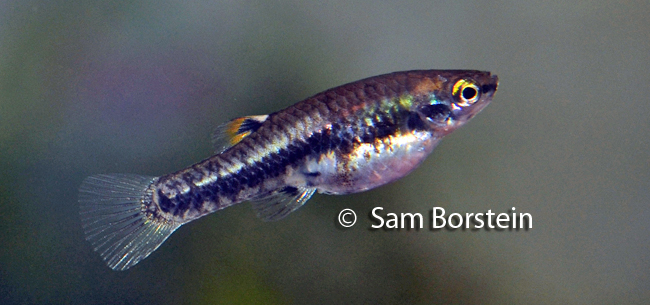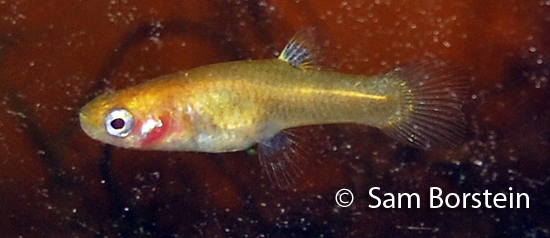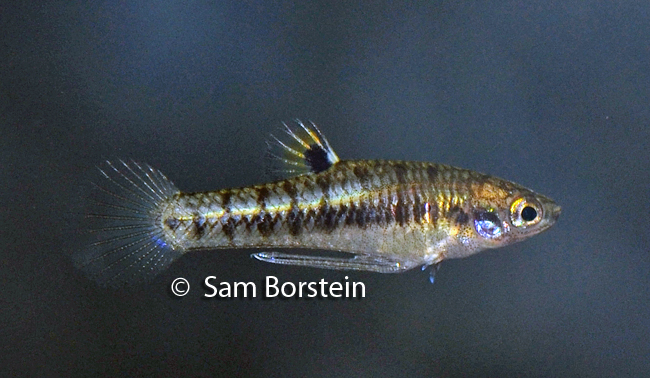Heterandria formosa
Girard, 1859
Least Killifish, Dwarf Livebearer

Above: A female Heterandria formosa. Photo by Sam Borstein.
Etymology:
Genus- Heterandria= different male (Latin).
Species- formosa= beautiful (Latin).
Intro:
Heterandria formosa is a tinny little livebearer native to the South East United States. This little fish was first typed by Girard in 1859, with a type locality of Mobile, Alabama. One of their nicknames is the Dwarf Livebearer, which is understood, but another is the Least Killifish. This is a peaceful little fish that would do well in a nano-tank.
There is also an amelanistic gold form of this species.

Above: A gold female Heterandria formosa. Photo by Sam Borstein.
Distribution:
The Least Killifish can be found throughout the Southeast of the United States, and West towards Louisiana. They inhabit lakes, rivers, creeks, and small pools. They are often associated with pond plants close to shore.
Size, Maturity, and Sexual Dimorphism:
Size: Males- 5 inches, Females- 1 inch
Maturity: .5 inches
Sexual Dimorphism: Males are smaller than females. Males have a gonopodium.

Above: A male Heterandria formosa. Notice the males gonopodium, a modified anal fin used for reproduction. Photo by Sam Borstein.
Care:
This is a hardy little fish. They are not hard to keep at all. They don't need a heater, although they will benefit from one.
The best set up for the Dwarf Livebearer is a small tank around 5-10 gallons that is densely planted. For tankmates, only small, nonaggressive fish can be added to the tank, so be very judgmental as to what fish you mix them with.
Diet:
In the wild the Least killifish eats insects and insect larvae and has a similar role in the environment as Gambusia holbrooki.
In aquaria, the fish will gladly eat crushed flake, daphnia, and baby brine shrimp. They are not difficult to feed.
Breeding:
Breeding in this species is pretty unique among livebearers and Poecilids. The males fertilize the females using the gonopodium, but instead of giving birth all at once, the females give birth to a few fry a day for a period between 10-14 days. Spawns can have up to 20 fry.
The fry are very small, but can eat baby brine shrimp. They are easy to raise and grow quickly.
Conclusion:
The Least Killifish, Heterandria formosa, is a great fish to keep. It is easy to keep, peaceful, and easy to breed. This fish is inexpensive and cool. If you have a small tank open, try them.
